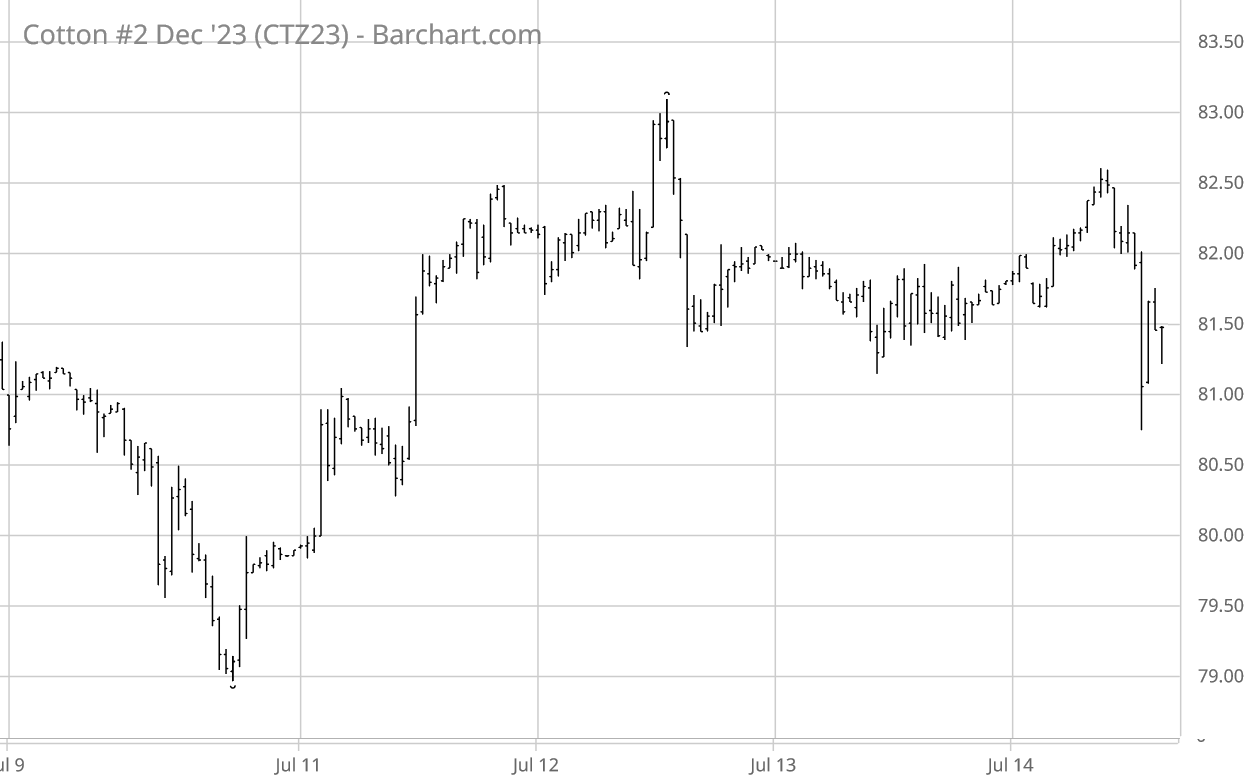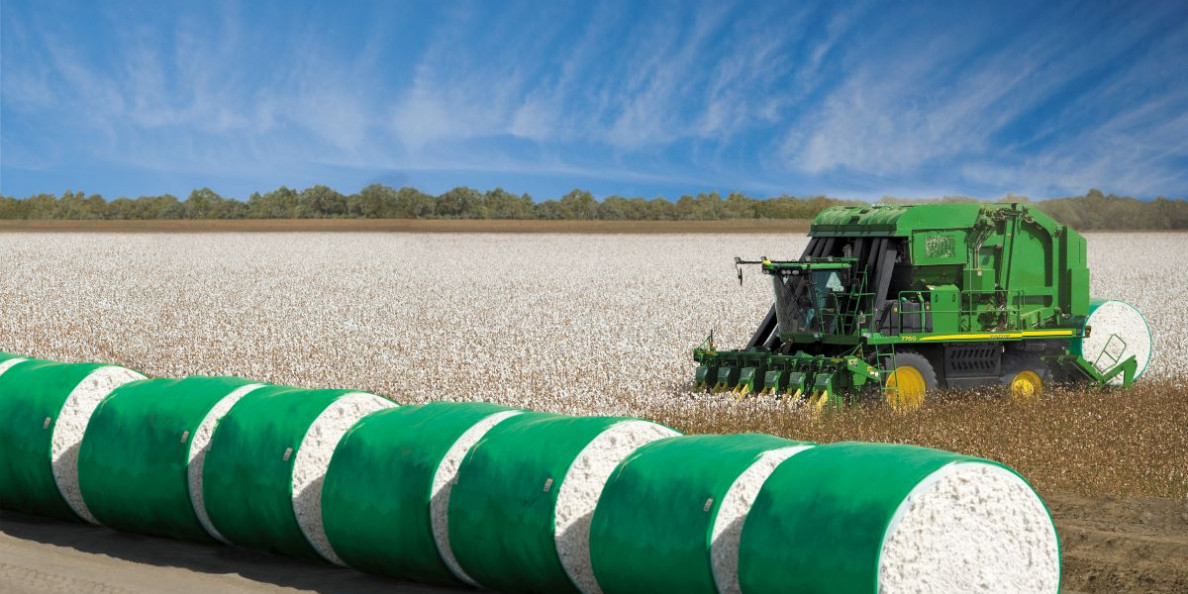For the week ending Friday, July 14, ICE cotton futures bottomed, rallied, gyrated, and ultimately kept to its longstanding sideways range (see chart above courtesy of Barchart.com). The ICE Dec’23 contract settled down a half cent on Friday at 81.22 cents per pound. Chinese cotton prices made one big upward stair-step this week while the A-Index of world cotton prices was more mixed.
In other markets, CBOT corn and soybean futures, along with KC wheat futures, all gradually trended higher, took a mid-week downshift, and then resumed an upward trend to finish the week. The U.S. dollar index declined across the week. Other macro influences (i.e., GDP, inflation, and interest rate policy) remain a potential headwind to longer term cotton demand (although expectations for more hawkish Fed policy were probably lowered by the latest inflation data).

Cotton-specific influences for the week ending July 14 included modestly bearish supply/demand updates from USDA. Specifically regarding the complicated production outlook, USDA kicked the can down the road (for which I am not blaming them). This week saw normally hot conditions with Oklahoma/Texas receiving more/less rain (click here and scroll down for the Texas regional summaries). Looking back, the excess moisture in April/May had mixed effects in northwestern Texas, followed as it was by wind and heat. The resulting production uncertainty is still clouding the U.S. cotton supply/demand and market outcomes.
On the other side of the world, the southwest monsoon rains were relatively early in their complete coverage of India, albeit a bit below average in their accumulation. The hope in India now is for normal July rainfall. Through July 6, U.S. export sales continued weak and actual export shipments remained below the needed weekly average pace. Of course, the pattern of U.S. cotton sales and shipments can be “lumpy” if major buyers like China step in with large, late-breaking purchases. Meanwhile, USDA’s weekly summary of the U.S. regional markets continued to reflect mixed spot physical trading activity and very light to moderate demand, across the U.S. regions.
ICE cotton futures open interest dipped and then rose strongly this week (especially Tuesday). The regular weekly snapshot of speculative positioning (through Tuesday, July 11) continued to show long speculative positioning from 1,978 new hedge fund longs, plus 7,771 covered hedge fund shorts, week over week. The net long index fund position shrank by 280 contracts.
For more details and data on Old Crop and New Crop fundamentals, plus other near term influences, follow these links (or the drop-down menus above) to those sub-pages.


